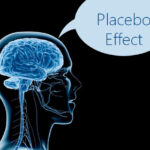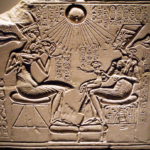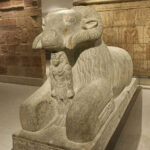John Hunter, an English Physiologist was a man prone to become extremely angry. He used to say, “The first scoundrel that gets me angry will kill me”. Once he was participating in a medical conference. In the course of the debate, he got up angrily from his seat to refute an argument by another participant. The next moment he fell dead. His anger had killed him as he had anticipated.
Could anger kill people? The Western system of medicine was anchored on the idea that people fall sick because of disease causing germs like bacteria, viruses and parasites. Therefore, the focus of Western medical research was on discovering antidotes to kill infectious germs. The first major breakthrough in antidote discovery came with antibiotics. Antibiotics were highly effective against bacterial infections and saved millions of lives from certain death. Formulations to tackle other pathogens followed. Eventually these microorganisms underwent mutations and turned resistant to antidotes. Newer and stronger remedies came out from the research labs to tackle the new versions of pathogens.
The idea that mind plays a critical role on bodily health was in existence for thousands of years. Some of the ancient systems of medical treatment had taken this reality in to consideration while designing its treatment process. Yoga and meditation came out of this awareness. But the Western system of medicine started seriously examining the influence of mind on body only in the recent times. Today, it has come to be widely accepted that our minds could make us ill or well. Emotional upheavals could make us seriously ill. In extreme cases, it may even cause instant physical disabilities or even death. This post seeks to look briefly into the role of our minds in the scheme of our physical wellbeing.
During the Dark Ages, many men wanting to lead a life of spirituality would retreat into the sterile desert or remote caves to live the life of a hermit. The idea was to purify their bodies and minds, and to purge the body of all carnal desires. But overpowering temptations would often hit such people and make them forget their mission. They would then scurry back to the town to satisfy their sexual urges. However, as they so rush back, their bodies would break out in boils and sores, their faces would become flushed and blotted, and some yellowish liquid would start oozing out of their boils and sores. This abrupt changes on the body would horrify the victims. They would be gripped by an overwhelming fear that God was punishing them for abandoning their spiritual mission. In desperation, they would fall on their knees and pray for forgiveness. In view of the circumstances surrounding the afflictions, this disease was once called the ‘Saint’s Disease’.
The ‘Saint’s Disease’ is not another myth from the mysterious Middle Ages. It is also a reality of the scientific age. For instance, Nikos Kazantzakis (1883-1957), the Greek writer famous for his celebrated works like Zorba the Greek, and The Last Temptation of Christ, had actually suffered from such an affliction. His translator Kimon Friar was a witness to it. Kazantzakis had told him how and when his affliction started. Friar shares it with us in his introduction to the book ‘The Saviour’s of God’ by Kazantzakis. The anecdote goes something like this…
Kazantzakis was visiting Vienna. The year was 1922. Kazantzakis was 39 years old and was married to his first wife Galatea. One evening in that month of May, he went to the theatre to watch a play. It so happened that a charming woman occupied the adjacent seat. Although he was an extremely shy person all his life, he found himself talking with his bewitching neighbour. Both soon found the play boring and left the theatre together to spend the rest of the evening walking the streets of Vienna in animated conversation. Then a rather unusual thing happened. Kazantzakis invited this woman to his room. He admitted that he was not very clear himself about the intentions behind the invite. The lady responded saying that since she had prior commitments for that night, she would visit him the next evening. Kazantzakis was on cloud nine. He went home and to bed extremely delighted.
The next morning when Kazantzakis woke up, he found his lips and chin swollen and spotted. He first thought it was eczema. Obviously, with that kind of a face, there could be no meeting with a pretty woman. So Kazantzakis sent word to her saying that they would postpone the meeting for the next night. But on the next day, his condition only worsened. The rendezvous was put off for the next night. But his skin problem kept spreading. Soon all his face puffed up. His eyes looked like pin pricks in a queasy blubber of flesh. His swollen lower lip dripped with some kind of yellow liquid. Overall, he wore a hideous look. The meeting with the lovely lady never happened…
The pathologists or dermatologists could not discover the cause of his ailment or help him with any cure for it. According Friar, Kazantzakis wrote to his wife in Athens that “if she were to suddenly open the door of his room, she would be filled with compassion, for she would behold him sprawled on his bed, surrounded by antiseptics, his face bound with compresses which he was forced to change every half an hour.”
Then it so happened that he had an opportunity to meet “a celebrated writer and professor of psychology at the University”, who convinced him that his deformation was the result of strange psychological causes. The psychologist was Dr Wilhelm Stekel, an internationally acclaimed author and teacher. Dr Stekel diagnosed his problem as the ‘Saint’s Disease’. According to his psychologist, Kazantzakis had a spiritual and mental energy beyond the normal, and the body suffers the reaction. He wrote to his wife saying that his illness was the result “of a mental and spiritual disturbance which manifests itself on the body...” Of course, he had apparently not told his wife or his psychologist about the woman he met at the theatre.
In August 1922, Kazantzakis packed his bags and left for Berlin. On 1 September, he wrote to his wife from Berlin, “I was made completely well in a miraculous manner, as soon as I left Vienna.” Two weeks later he again wrote, “Fortunately, I am still well. I hope the Viennese psychologist was right, that this spiritual sickness of mine passed forever as soon as I put some distance between myself and Vienna…”
The circumstances surrounding the illness of Kazantzakis reveal that his malady made a sudden appearance when he, a happily married man, had set up a nocturnal rendezvous with a strange and attractive woman. In all likelihood, the meeting would have ended up with both of them together in bed. The perceived joy of the company of the woman notwithstanding, the situation was extremely emotional for a sensitive spirit like Kazantzakis. He was being torn by conflicting emotions. On the one side were the pleasurable thoughts of the companionship of a strange but charming woman. On the other side were the painful thoughts of cheating on his trusting wife. A highly stressful emotional war was waging within his heart throughout the night. But would this mental stress manifest as an ugly affliction on the skin on his face? The answer is ‘Yes’.
Every bodily activity is triggered by the brain. The brain processes inputs and issues signals to the body through the nervous system. Much of our bodily movements are triggered by our conscious thoughts. We sit, stand, walk and run because of our conscious thoughts making the brain to send appropriate signals to the body parts concerned. But in many bodily activities, we do not spark off actions by means of conscious thoughts. The signals of most of the internal bodily functions like breathing and the beating of our hearts are not started, stopped or controlled by our conscious thoughts. May be, these are activated through the thought processes of the subconscious mind.
Every thought, conscious or otherwise, alters our brain structure. We may, therefore say, that by the time you finish reading this post (if you have the interest and patience to read to the end) you would have a brain structure different from the one with which you started reading this. Changes in the brain structure influence the types and patterns of communications emanating from the brain. These communications have a substantial say in the state of our body. In other words, we are essentially the product of our thoughts. The Bible says,“As a man thinketh in his heart, so is he.”(Proverbs 23:7).
In his article that had appeared in the ‘Reader’s Digest’, US doctor John A. Schindler says that 77% of the people consecutively admitted into a New Orleans clinic had all been suffering from one common disease. That disease once called psychoneurosis is presently termed as psychosomatic illnesses. It is defined as “a physical disease that is thought to be caused, or made worse, by mental factors”. Dr Schindler terms the causes of psychosomatic disorders as the cares, difficulties and troubles (c.d.t.) of the circumstances of daily living. That the disease is caused by the mind does not mean it does not hurt physically. As the doctor puts it, the pain could be no less severe than what a patient with gallbladder colic would suffer.
To understand how thoughts make people sick or healthy, we have to understand the process of ‘thinking’. Thinking is NOT something that is going on just within our brains. Thinking involves the whole body. This is more so when thinking involves emotions. The psychologist William James defines emotion as a ‘state of mind that manifests itself by a perceptible change in the body’. For instance, anger is an emotion all of us understand. The face of an angry person goes either white or red; his eyes widen, his muscles tighten up to make his body tremble… People often faint or vomit at the sight of blood. These are all consequences of distressing thoughts processed by the brain leading to emotions impacting various organs.
We all know that holding our fists tight for a long period would hurt us. Similarly, if the mind of a person is predominantly occupied by distressing thoughts, his/her muscles tend to tighten. Depending up on the muscles affected, the person might suffer from severe pain at the back of the neck, difficulty to swallow, serious pains and discomforts in various parts of the digestive system leading to ulcers or loss of appetite and so on. Tensions trigger headaches because the blood vessels inside or outside the skulls squeeze And at the root of a substantial part of the skin diseases is blood vessels in the skin reacting to emotions like anxiety, worry and disgust. (Perhaps, that explains the ‘Saint’s Disease’).
Another important way in which emotional states influence our bodies is through the endocrine system. Endocrine System is the builtin immune system of the human body. It protects us from the attack of pathogens to keep us healthy. Every time a threat is perceived, the immune system of the body goes on high alert and deploys measures to neutralize it. There is a plethora of highly complex processes continually running in our bodies to keep us fresh and fit. For instance, the body is incessantly renewing itself through cell division (Mitosis) and cell death (Apoptosis). The result is that we have a new stomach every week, a new skin lining every month, and a new skeleton every three months. Experts on the topic are of the view that almost 98% of our body is recycled on an annual basis. As someone had put it, human body is a process rather than a structure; it is a verb rather than a noun; it is more Chemistry than Physics. And the endocrine system is the critical Chemistry of our immune system.
Assume that you are driving at high speed on a street and another car suddenly gets into your lane from a side road. The next instant your heart would race, your breathing would become deeper and faster, and your body might tremble. Some people might even faint. The sudden fear that struck you has produced these bodily changes. Once your brain registers the danger, it sends an emergency impulse to the adrenal glands (the endocrine system), which squeezes Adrenalin into the blood stream. When the Adrenalin hits the heart, your heart would start pounding. When it hits the blood vessels to the brain, it narrows down making you feel dizzy. If the blood vessels on your heart are squeezed down, it might trigger a fatal heart attack. The primitive man needed it to face the constant danger in which he lived. In the face of danger, he had just two options – fight or flight. Both needed the instantaneous surge of bodily energy that Adrenalin supplied.
Now, think of what happens to a person who is constantly angry, anxious, afraid or upset. More and more Adrenalin would get squeezed in to the blood stream. This would deplete the level of Adrenalin and consequently the level of immunity of the body. Stress also produces immunosuppressants like cortisol and epinephrine. Therefore, when a person remains under constant stress, he would fall ill easily. A sick person would find it difficult to recover irrespective of the medicines administered.
If negative emotions produce negative chemical changes in our bodies to make us ill, positive emotions should produce positive chemical changes in our bodies to prevent and cure our illnesses. In his international best seller, ‘Anatomy of an Illness’, author Norman Cousins narrates his own personal experiments in this area. He says that positive emotions like love, hope, faith, laughter, confidence and the will to live have therapeutic values. Some of the miracle healings and faith healings (perhaps, including the healings done by Jesus as we read in the Gospels) could be rooted on this important insight. (Let me postpone the discussion on this to a future post). The sum and substance of what I have said is that, if you are unwell the best remedy is to just fall in love!
Let me conclude with the anecdote of an African witch doctor from the ‘Anatomy of an Illness’. The author was taken to the witch doctor’s ‘clinic’ by an ‘English Doctor’, Dr Schweitzer. The ‘clinic’ was just a small patch of jungle clearing. The witch doctor would give herbs with instructions on its use to some of his patients. To some others he gave no herbs but only recited some incantations – may be accompanied with smoke, fire and the sound of ringing bells and rustling of pieces of bones. In other cases, the witch doctor quietly pointed to Dr Schweitzer.
The doctor later explained the witch doctor’s approach to Cousins. Those to whom medicines were given had only functional complaints, which would be cured by the medicinal herbs. The problem with the second category was essentially psychological and the incantations should make them believe that whatever evil had inhabited them was now driven out. With their anxieties driven out, their bodies would heal the natural way. The third category had serious issues needing surgical or other modern medical interventions. He directed them to Dr Schweitzer. Obviously, the African witch doctor was smart, perhaps smarter in comparison to some of the doctors operating in our times!
Let me close with the words of Dr Schweitzer explaining to Cousins how the African witch doctor succeeds. He says, “The witch doctor succeeds for the same reason all the rest of us succeed. Each patient carries his own doctor inside him. They come to us not knowing that truth. We are at our best when we give the doctor who resides within each patent a chance to go to work.”













A very well written piece that explains the role of soft, intangible elements like mind, beliefs, and feelings on our physical body.
The truth of our existence is enormously complex. However, the principles that can enable us to live truly fulfilling lives are deceptively simple. Unfortunately, our thoughts and beliefs have been so shaped by the products, structures and systems (generated by science and technology) that surround us on all sides, that most of us are neither able to comprehend nor follow the simple universal principles and laws.
I'd like to add that in the West an increasing number of intellectuals in varied fields have for some years now been busy opening up new frontiers of knowledge. One of these is the 'psychosomatic medicine'. A good description of this field can be found in the book The Divided Mind by J.E. Sarno, MD.
@HP
You have shared so many valuable thoughts in so few words.I thank you for your insightful comments. Regards.
Kutty